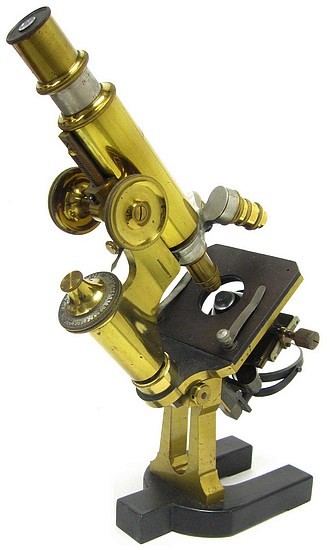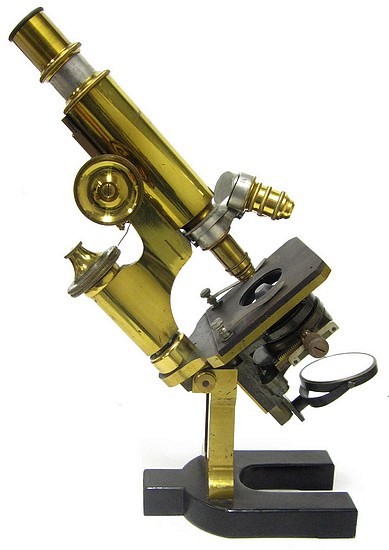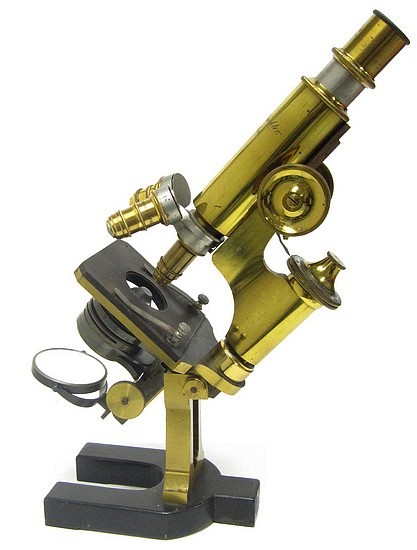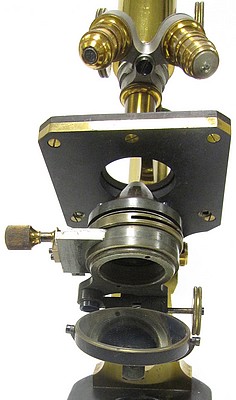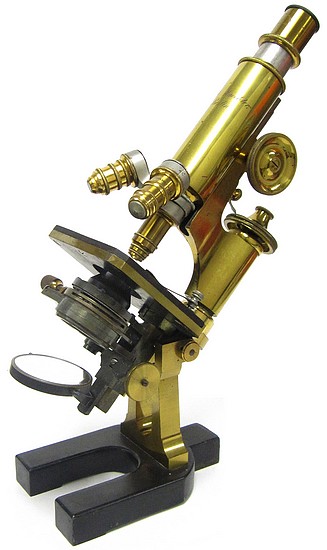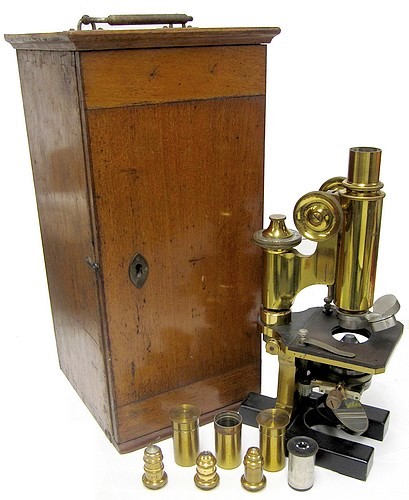
The microscope
currently has objectives 3, 7, and 1/12 (oil
immersion), a single eyepeice, and an Abbe
condenser.
Waechter Stativ I of 1889
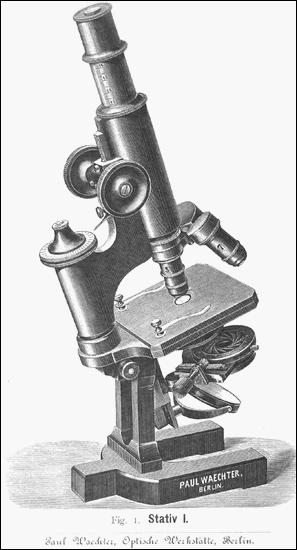
An 1894 advertisement
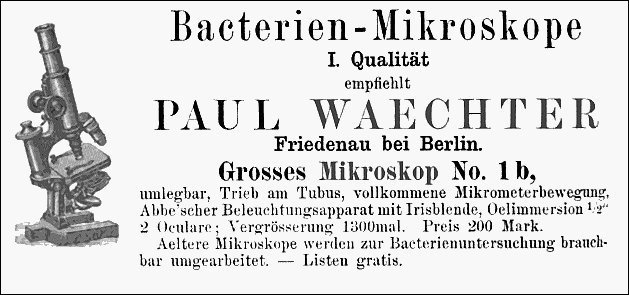
The German optician Paul
Waechter (1846-1893) originally trained in the workshop
of Carl Zeiss in Jena. By 1872, he started his own
business in Berlin. Over the years, he produced a
variety of different microscope models, but was
primarily known for microscopes designed to detect the
Trichinella spiralis in meat
samples.
The following was
extracted from the catalog of the Henry Heil Chemical
Co., St. Louis, 1891:
No. 23.Large Microscope,
for bacteriological work, suitable for almost all
requirements, with joint for inclination, coarse
adjustment by rack and pinion, fine adjustment by means
of a most perfectly working micrometer screw with
divided head, Draw-tube with mm. scale. Abbe
Condenser with Iris Diaphragm, rack and pinion
for raising and lowering the entire apparatus;
the condenser system can easily be taken out and
the Cylinder Diaphragm can be used in its place.
Nose-piece for three Objectives. Eye-piece Micrometer,
length of scale 5 mm.= 50 divisions. Objectives No. 3
and 7, Homogeneous Immersion 1/12 and 1/16.
Eye-pieces No. 1, 2, and 4 (or No. 2, 3 and 5, as
desired). Magnifying Power, 49 to 1687 diameters. $
381
No. 24.Same as No. 23.
Objectives No. 3 and 7, Homogeneous Immersion 1/12,
Eye-pieces No. 1, 2 and 4 (or No. 2, 3 and 5, as
desired). Magnifying Power 49 to 1270 diameters
268
No. 25.Same as No 23.
Objectives No. 3 and 7, Homogeneous Immersion 1/12.
Eye-pieces No. 1 and 3 (or No. 2 and 4, as desired).
Magnifying Power 49 to 955 diameters 247
This was the microscope
of Dr. Julius Townsend Rose, MD (1869-1950). It was
purchased for this collection from his grandson. On the
basis of the advertisement shown above, this is the
large model No. 1b, designed for bacteriological
studies. Dr. Rose obtained his medical degree from
Columbia University in New York in 1892 and one can
therefore assume that this is the instrument he used
for his medical studies and in his subsequent practice
in Brooklyn NY. The following quote was extracted from
a online genealogy of the Rose family:
"Julius Townsend
Rose, b. 28 Apr 1869, Stephentown, NY and died 23 Jan
1950 in Sonoma, California. He married (1) Bertha A
Brimmer in 1893 Stephentown, NY. She was born 1869, the
daughter of Henson (?) M and Augusta Brimmer. He
married (2) Mabel Collins. She was born 04 Feb 1892 in
New Jersey and died 17 Jun 1949 in Sonoma, California.
In the 1900 census Julius states he was a teacher, and
was living with his in-laws (the Brimmer's) in
Stephentown. In 1910 Julius, Bertha and Augusta are
living in Brooklyn, NY where he is listed as a
physician, general practioner. There is a family story
that he removed his niece's appendix on the kitchen
table when he was visiting his brother
Arthur".
